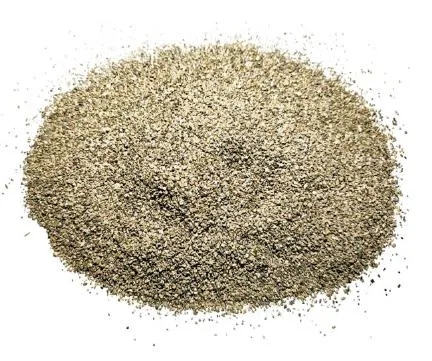تەموز . 28, 2025 17:01 Vegere navnîşê
Metallurgical Efficiency with Innovative Recarburisers and Covering Agents
In high-temperature industrial processes, from steelmaking to foundry casting, material purity and process control are critical to achieving superior end-product quality. Optimizing carbon content, managing nitrogen levels, and protecting molten metal during handling and transfer stages all contribute significantly to yield efficiency and metallurgical integrity. The application of recarburisers and covering agents is not just a support step—it is a foundational practice that can reduce defects, cut costs, and streamline operations when engineered and applied correctly.

Enhancing Steel Purity by Utilizing a Traditional Recarburiser in Controlled Environments
While advanced metallurgy continues to evolve, the use of a traditional recarburiser remains essential in many industrial applications, especially where high-carbon steel production is involved. Known for its consistency and high carbon recovery rate, this material is critical for balancing carbon levels in molten iron. In high-volume steelmaking furnaces, traditional recarburiser enables operators to achieve desired specifications efficiently without excessive alloy additions. Its granular structure promotes rapid dissolution and helps maintain stable thermal conditions during the melt phase.
Reducing Contamination Risks through Precision Use of Low Nitrogen Recarburiser Formulations
In high-specification alloy production, reducing unwanted nitrogen content is paramount. By introducing a Low Nitrogen recarburiser during the molten stage, manufacturers can tightly control nitrogen pickup without compromising carbon absorption. The Low Nitrogen recarburiser is especially suited for applications like automotive-grade steel or high-performance castings, where gas porosity and blowhole formation must be minimized. Unlike conventional carbon sources, this engineered material contributes to metallurgical purity while maintaining structural uniformity across the cast matrix.
Protecting Metal Surface Integrity Using a Particle Covering Agent during Crucible Processing
To shield the molten metal from atmospheric contact and heat loss, many foundries apply a particle covering agent on the melt surface. Composed of selected refractory and insulating compounds, the particle covering agent forms a floating layer that minimizes oxidation and reduces thermal radiation. In induction and cupola furnace systems, this agent also helps absorb surface impurities, resulting in a cleaner melt. By using this approach, facilities reduce slag inclusion in the final product and extend crucible life by protecting the inner lining from aggressive reactions.
Maximizing Thermal Efficiency with a Ladle Covering Agent in Steel Transfer Operations
When transferring molten steel between vessels, thermal loss can degrade temperature control and increase reheat energy demands. Applying a Ladle Covering Agent atop the molten metal provides an insulating barrier that minimizes temperature drop. Industrial-grade Ladle Covering Agent products also suppress reoxidation by limiting exposure to air, helping maintain chemical composition throughout the transfer. In high-throughput steel plants, the use of this agent translates directly into fuel savings, reduced reheating cycles, and improved casting consistency.
Improving Casting Uniformity through Application of a Tundish Covering Agent in Continuous Casting
At the tundish stage of continuous casting, maintaining a stable temperature and clean surface is vital to slab and billet quality. The integration of a Tundish Covering Agent supports these goals by creating a thermal buffer and preventing oxidation during flow. This specialized material forms a floating protective layer over the steel stream, enhancing fluid dynamics and minimizing entrapment of inclusions. A well-designed Tundish Covering Agent also facilitates easier skimming of slag and contributes to extended refractory lining performance.
Why Purity Control Is Essential in High-Grade Metallurgy
In metallurgical operations producing precision components, even trace impurities can compromise mechanical performance. Utilizing high-purity recarburisers and effective covering agents ensures that carbon, nitrogen, and oxygen levels remain within tight tolerances, delivering consistent metallurgical output.
The Economic Benefits of Effective Covering Agent Use
Beyond technical improvements, covering agents offer tangible cost advantages. By protecting molten metal and equipment, they reduce scrap rates, minimize refractory maintenance, and lower fuel usage. This efficiency can be significant across large-scale operations.
The Relationship Between Carbon Recovery and Furnace Productivity
Carbon recovery directly affects furnace cycle time and alloying efficiency. Using high-quality recarburisers enables faster carbon saturation, reduced additive waste, and shortened melt cycles—all of which contribute to higher daily throughput and lower operational costs.
Industrial Recarburisers and Covering Agents FAQs
Q: How does a traditional recarburiser differ from synthetic carbon sources?
A: A traditional recarburiser is typically made from calcined petroleum coke or anthracite. It offers a balanced carbon recovery rate and is cost-effective for general steelmaking, whereas synthetic options may have higher purity and performance in specialty applications.
Q: Why is a Low Nitrogen recarburiser important in modern steelmaking?
A: Reducing nitrogen levels is crucial for preventing porosity and maintaining weldability in steel products. The Low Nitrogen recarburiser ensures minimal gas pickup during carbon addition, improving the mechanical integrity of the final product.
Q: What role does a particle covering agent play during melting?
A: A particle covering agent acts as a thermal and chemical barrier, preventing oxidation and heat loss from molten metal. It also absorbs floating impurities and helps stabilize the melt’s surface during high-temperature processing.
Q: Can ladle and tundish covering agents be used together?
A: Yes, both Ladle Covering Agent and Tundish Covering Agent serve complementary roles in steel transfer and casting. While the ladle agent preserves temperature during handling, the tundish agent improves flow dynamics and final cleanliness during continuous casting.
Q: How do covering agents influence furnace maintenance?
A: By limiting direct contact between molten metal and refractory linings, covering agents reduce erosion, slag attack, and thermal cycling damage. This extends equipment life and reduces downtime for repairs.
-
Strength with Premium Steel and Calcined Bauxite
NûçeJul.28,2025
-
Revolutionize Construction Efficiency with Smart Industrial Materials
NûçeJul.28,2025
-
Redefined with High-Grade Iron Powder Solutions
NûçeJul.28,2025
-
Metallurgical Efficiency with Innovative Recarburisers and Covering Agents
NûçeJul.28,2025
-
Industrial Efficiency Enhanced with High-Performance Recarburizer Solutions
NûçeJul.28,2025
-
Boosted by Advanced Iron Powder and Carbon Additive Solutions
NûçeJul.28,2025
